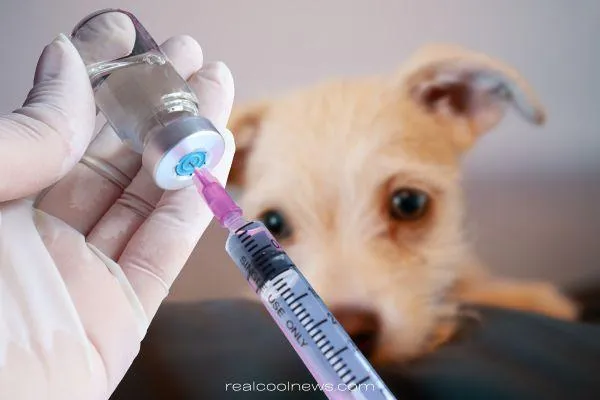
Understanding the Shift in Canine Vaccines: A Common‑Sense Approach
In recent years, veterinary practices have introduced new vaccines for dogs—not out of greed, but because protocols are evolving. Still, concerns about over-medication, Big Pharma influence, and rising cancer rates in dogs are real and deserve thoughtful attention.
📈 Why Vets Are Recommending More Vaccines
Veterinary schools often receive substantial funding from pharmaceutical companies. For example, Bayer, Pfizer, Merck, and Elanco routinely contribute to veterinary education, continuing education, scholarships, and research grants. While these partnerships can advance animal health, they can also skew educational content toward promoting vaccines and prescription products.
Veterinarian educators have called for stronger safeguards: universities like Colorado State and UC Davis are developing rules to ensure students learn unbiased science . That said, many vets today still follow protocols shaped by years of pharmaceutical funding.
🧬 Are Dogs Dying from Vaccines… or Cancer?
Pets are succumbing to cancer at alarming rates: nearly 1 in 4 dogs, rising to 1 in 2 over age 10. Some worry cancers like lymphoma or sarcomas might be triggered or worsened by injections or long-term medication use.
One well-documented risk: vaccine-associated sarcomas—malignant tumors most commonly seen in cats, but they can occur in dogs too. These are rare (approximately 1 in 1,000–10,000) but serious. They're linked more to aluminum-adjuvanted vaccines and volume of injections.
That said, mainstream studies attribute most cancer cases to genetics, breed predisposition, age, and lifestyle—not vaccination. The rising cancer trend in pets likely mirrors better diagnostics, longer pet lifespans, and environmental factors.
✅ What Science Says: Vaccine Risks & Rewards
Core (DAPPv, Rabies)
Prevents deadly diseases (distemper, parvo, hepatitis, rabies); often legally required.
Safe; rare reactions; lower-frequency boosters based on titers now accepted .
Leptospirosis
Protects from a serious zoonotic disease.
Immunity often short-lived. Mild reactions common; risk escalates in outdoor dogs.
Lyme Disease
Reduces risk of tick-borne sequelae like kidney disease.
Doesn’t cover all strains; boosters yearly; mild side effects possible.
Bordetella / Flu
Helps social dogs avoid kennel cough or dog flu.
Effectiveness varies; recommended for group-living pets.
Others (Giardia, Coronavirus)
Potential benefit in specific environments (e.g. kennels, shelters).
Limited evidence; generally non-essential for most pet dogs.
🤝 Addressing Doubters: Empathy with Clarity
If you’re cautious about vaccines, you’re not alone. Many dog owners worry about over-vaccination and possible long-term consequences. Those concerns are valid:
The vaccine schedule of yearly boosters was adopted as a conservative standard decades ago—and still lingers despite updated science .
Pharmaceutical influence in curricula and guidelines may create bias toward more frequent or combo vaccinations .
Rising cancer rates in dogs create natural unease about injections—but remember, correlation isn’t causation.
🧩 Practical, Balanced Strategies for Your Dog
1. Tailored Vaccine Plans Based on Lifestyle
Talk to your vet about annual titer testing for core vaccines (DAPPv) instead of blanket boosters.
Opt for non-core vaccines based on risk: Leptospirosis if your dog swims or lives near wildlife; Lyme in tick-endemic areas; Bordetella/flu if your dog is social or boards.
2. Reduce Injection Frequency & Volume
Spread out vaccines over multiple visits to minimize immune system overload and monitor for reactions.
Use single-antigen vaccines when needed rather than combination shots.
3. Prioritize Injection-Site Safety
Vaccinate in areas where tumors (if they arise) are easier to treat surgically (leg over shoulder). Current guidelines recommend specific injection sites to reduce risk.
4. Support Immunity Naturally
Incorporate omega‑3s, antioxidants, and probiotics to support immune health as adjuncts—not replacements.
Consider herbal supplements under veterinary guidance (e.g., medicinal mushrooms, echinacea).
5. Practice Vigilant Oversight
Ask your vet to disclose any pharmaceutical sponsorship or affiliations.
Report any adverse reactions to the FDA or USDA centers to improve veterinary safety tracking.
🎯 Bottom-Line Takeaways
Core vaccines save lives and are broadly safe.
Non-core vaccines have their place but should be applied PTO: Purpose + Timing + Ownership/Environment.
Big Pharma influences veterinary education and guidelines, but awareness and transparency are improving.
Rising cancer in dogs likely stems from multifaceted causes—vaccines are not proven culprits.
Empathetic, informed decision-making—working closely with a vet who respects your questions—is key.
📝 Pros & Cons Snapshot
Pros
Shield against deadly, preventable diseases.
Titer testing enables fewer unnecessary shots.
Tailored plans reduce risk and build trust.
Cons
Mild adverse reactions are possible; very rare serious ones.
Pharmaceutical sponsorship might bias protocols.
Booster frequency may exceed what’s scientifically necessary.
💡 Real‑World Tips for Smart Pet Health
Opt for titer tests over automatic boosters.
Space vaccines across appointments to reduce stress.
Confirm injection sites follow current best practices.
Boost immunity with diet and lifestyle—not just shots.
Choose a vet who welcomes your questions and shares their affiliations.
In short: Vaccines, when used purposefully, remain essential. But your voice matters. By staying informed, communicating expectations, and pairing science with compassion, you and your vet can build a vaccine strategy tailored to your dog’s life—not a checklist written by Big Pharma.
For deeper guides on titers, injection safety, and holistic immune care, visit [your-blog-link-here.com].
